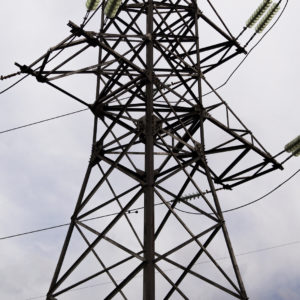John F. Kennedy said, “The time to repair a roof is when the sun is shining.” Today, the push is on to fortify the electric grid before severe weather or other catastrophes hit.
The spate of superstorms and hurricanes that have led to widespread and prolonged outages in New York, New Jersey, Texas, Florida, Puerto Rico and most recently the Carolinas has Americans asking some basic questions.
Will we be safe? How long will we be without lights and power?
The good news is that there is a lot of work already being done to strengthen the grid.
The U.S. Energy Information Administration reported in February, “Spending on infrastructure to deliver power to homes and businesses has increased steadily in the past 10 years as utilities build, upgrade and replace station equipment, poles, fixtures and overhead lines and devices.”
It adds, “Spending on operations and maintenance of the transmission grid has also risen steadily — from $3.3 billion in 1996 to $13.5 billion in 2016.”
America’s electric grid is 5.5 million miles, which makes identifying the weakest links in the chain inherently challenging. Furthermore, no two traumatic weather events are the same, and thus predicting all catastrophic scenarios is difficult at best.
Below are 10 positive developments in recent years that are helping to strengthen grid reliability and reduce the likelihood of outages from a myriad of day-to-day events or larger catastrophes.
—Better data analytics. Improved computer systems are more effective at analyzing and predicting likely damaging, troublesome events so that pre-emptive actions can be taken.
—Digital media. The use of cell phones and social media helps utilities to be notified more quickly and with more detail on where problems are.
—Bury lines. When new construction occurs, electric lines are now often buried. These buried lines have far fewer problems than overhead lines.
—Fortify and move substations. Vulnerable substations, especially those on flood plains, are being elevated or moved.
—Tree management. Falling trees can take down power lines and were a key cause of the vast 2003 Northeast blackout. Through tree trimming and vegetation management, including identifying rotting trees, these potential problems can be eliminated.
—Stockpiling. It is difficult to obtain grid equipment, especially large amounts of it, after a disaster. Having items pre-positioned for replacement or even redeployment to affected areas in a given region of the country addresses this challenge.
—Better communication with crews. It is also now common for out-of-state crews to be deployed across the country. Through industry information sharing and lessons from prior disasters, communications between these crews has significantly improved.
—Automated metering. With smart meters, which provide two-way information from homes to utilities, problems can be more quickly identified and resolved. While the meters are primarily being used by consumers to manage power consumption, they also strengthen grid reliability.
—Electromagnetic pulses. The U.S. Department of Energy is assessing steps to address potential widespread damage from electromagnetic pulses, such as an atmospheric nuclear explosion or targeted ground sabotage. The Center for Security Policy has emphasized the need for such contingency planning.
—Share information. Through groups like the Edison Electric Institute and the Electric Power Research Institute, utilities and other energy experts are sharing lessons learned in disaster responses and establishing best practices.
There is no silver bullet when it comes to fortifying America’s vast, complex and ever-changing electric grid. And with large portions of the grid more than 40 years old, having originally been designed and built for locally generated power, the challenges will continue to significant.
By continuing the day-to-day work of identifying and fixing problems, and planning for catastrophes, the grid will be continuously improved. It will be better able to withstand a slew of weather disasters and other troublesome scenarios, while better serving the public day to day.

